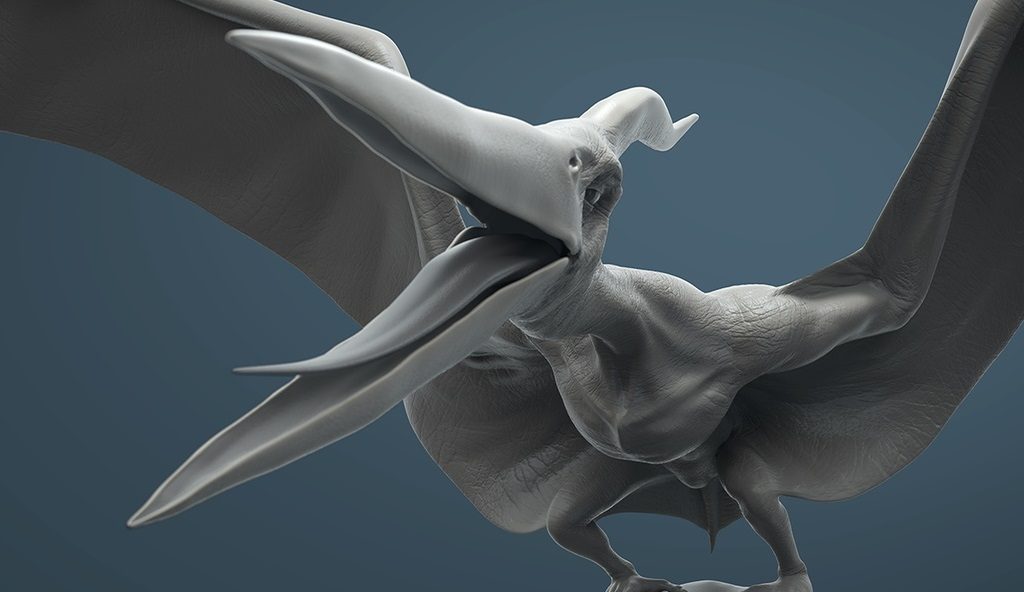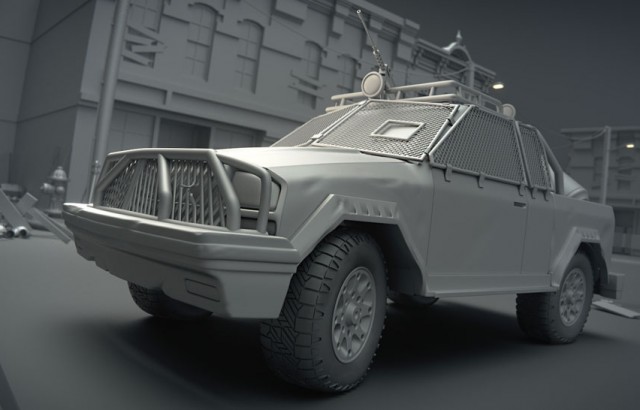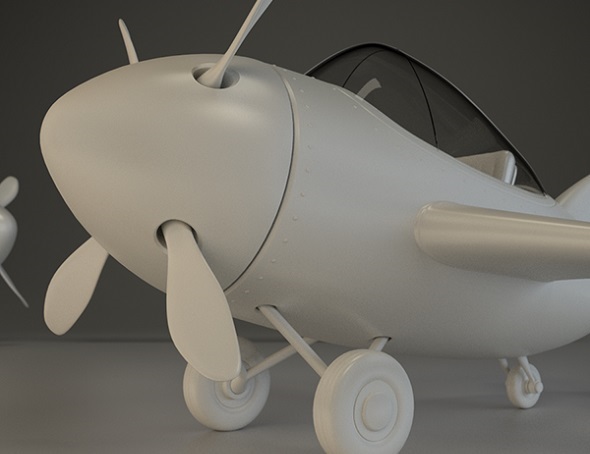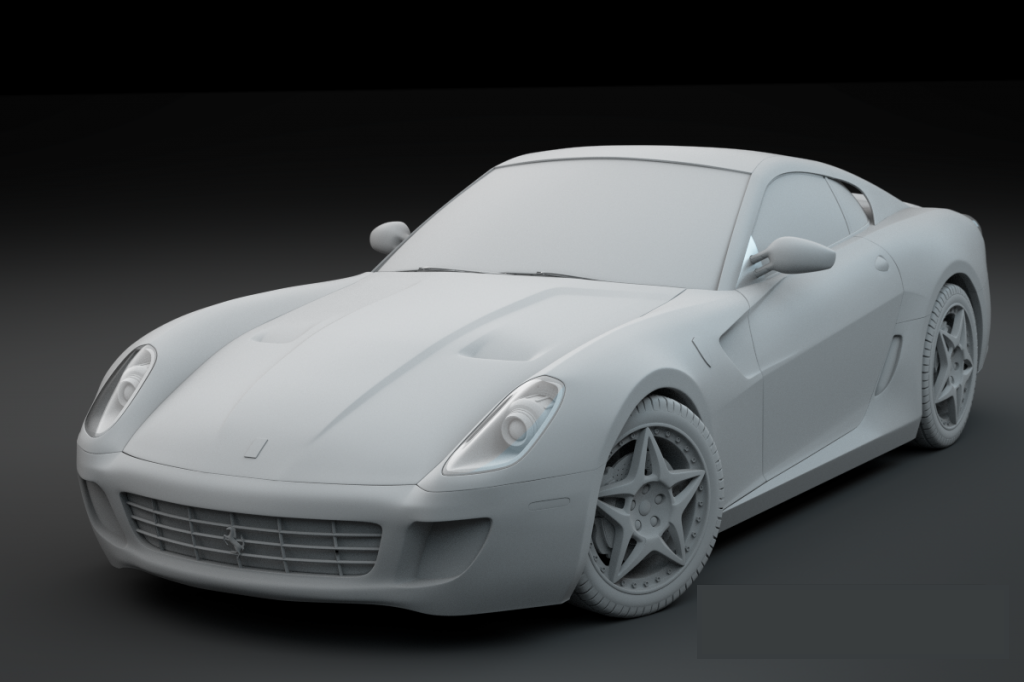
How to Become a Professional 3D Modeler: An Interview with 3D Modelling Expert Jonathan Williamson
Becoming a professional 3D modeler is the dream job for many people. But how does one start a career as 3D modeler? Where can one find jobs? And how big is the competition really? We talked to Jonathan Williamson from CG Cookie, one of the leading digital art education sites, about how you can turn your hobby into a profession and start making your mark in today’s competitive industry – as well as what makes modeling for 3D printing special.

3D model of a military vehicle created by Jonathan Williamson
Jonathan, you are a professional 3D modeler with years of experience. Many 3D modelers are thinking about how to become more than “just” a hobby modeler and go professional as well. The question that a lot of people ask is whether they should select a narrow area of focus, or become a generalist who knows how to do many things without focusing specifically on one.
Jonathan: Let’s assume somebody wants to focus on one area, become a game developer and they want to be paid as a 3D modeler for game art. That can often be harder than just being a generalist, because as soon as you corner yourself into a specific career, you have a lot more competition. You are much more narrowly focused which can be a good thing as you refine this one skill, but you also have direct competition for doing exactly what you want to be doing.
If somebody is starting out and is feeling confident that they want to begin charging for their time, personally I think you should stay pretty broad. While you are at this starting stage trying to turn yourself into a professional in the 3D world, being a generalist means you get more opportunities and get really good at a lot of different things. And over time, as you get more experienced and have worked on some commercial projects, the focus may crystallize naturally. But selecting it early on might actually mean you are closing a lot of doors in your future.
Let me illustrate based on my own story: I started doing Blender professionally at 15 by just creating models, one at a time, for people that needed them. For example, if somebody popped up on a 3D modeling site with a request, I would generally try to apply. Of course, most of them fell through! But even getting one out of a hundred was something. I didn’t just focus on one niche and it gave me a much broader base. Many people will say this becomes more difficult because you are not as focused and may be spreading yourself thin. True, but it also gives you more skills and offers more actual prospects.
So my answer, in short, is: go general first. You can always specialize later. It doesn’t really work the other way.

3D model of an airplane created by Jonathan Williamson
One of the other big questions is finding the actual job. Where do you find work? Where do you look for opportunities?
Jonathan: There are a lot of sites with jobs, blenderartists.org, for example. There is a volunteer board where people can advertise jobs and contract artists. If you are a Blender artist and you want to start working professionally, you have no excuse but to be participating in that forum and ensure you are getting your work in front of people, saying “Hey, I am available!” One thing that is absolutely not going to happen is people just knocking on your door, saying, “Work for me and let me give you money” if you do not present yourself. If you want to make money with 3D modeling, make yourself available, make yourself known and spend significant time making yourself better.
If you know how to model for 3D printing, the i.materialise modeling service is a great place to offer your skills.
So when I am out there offering my services, do I need to have a portfolio to showcase my work? Should I have at least a year or two of experience or is it difficult to put a number on it because it is so individual?
Jonathan: You absolutely need a portfolio. 3D modeling and most other aspects of 3D are all about the visuals and the final result. You can’t (or shouldn’t) be hired to create visual elements if you don’t have a portfolio to show off.
The length of experiences varies, as it depends on your ability. If you take somebody that is unemployed and very motivated to learn a new skill, they may absolutely learn enough to start working, at least partially professionally, in 3 to 6 months. That may be pretty optimistic, but it can and has been done. In fact, I know people that have been working for 10 years who are on the same level as people who started a year ago. Often times it comes down to your motivation, how much you want it and why are you doing it. If you are doing it as a hobby on the side because you enjoy it, inevitably it will take you much longer because you will not be as motivated. But if it is something that you are absolutely determined to make into a career and you have bills to pay, then you are pretty determined to make it happen.

3D model of a Ferrari created by Jonathan Williamson
Now let’s talk about a related field: how does 3D modeling relate to 3D printing and how does it differ from 3D modeling for other purposes?
Jonathan: It is quite similar, all the models are essentially created in the same place – your 3D software. The difference comes in the execution of the modeling. For example, particularly for games or mobile games, it is optimal to use as few polygons as possible. What I mean is this: if you have a character that is wearing a heavy coat and is never going to take it off, you will not model the body underneath. You are going to optimize any piece of geometry that you can and you’ll likely remove any piece that’s not necessary.
On the flip side, there is no reason for overlapping parts on a 3D printing model because it will come out as a single object and optimization aren’t as much of a concern. The printer does not really care about geometry density and structure.
Also, if you are given a game model, you will only be seeing it from one angle, whereas on the 3D printing side, it has to be visible from all sides and angles. The main difference is realizing the purpose for which you are producing your model. If it is for games, it needs to be optimized for the player and for the hardware, and you need to consider all the technical limitations. If it is for 3D printing, it is much more related to what the need for the real-world object is and what is going to work and what is not.

3D model of a creature created by Jonathan Williamson
Do you have any words of wisdom or advice to share before we sign off?
Focus and self-judgement. While you’re learning 3D modeling, whether for 3D printing or not, there’s a lot you need to learn. Take it a step at a time and try not to get overwhelmed or too ahead of yourself.
Also, it’s very easy to compare yourself negatively to other professionals but you have to keep in mind that most of what you see of other people’s work are their successes, whereas you’re often judging yourself based on your collective work, including failures and successes. What you don’t see is all the failures that those professionals aren’t showing every single day. I forget who first told me that, but it’s really stuck with me, particularly while learning new skills.
We would like to thank Jonathan and Pavla from CG Cookie for their help with preparing this interview. CG Cookie is an online learning hub for digital artists, hosting Blender tutorials, courses, and exercises.
Do you want to learn more about how to get started with 3D modeling? Read our first interview with Jonathan to find out more. He also helped us with this tutorial on how to create your first 3D print in Blender in an exciting how-to video. New 3D modelers should also take a look at our “5 Mistakes to Avoid When Designing a 3D Model for 3D Printing” blog post.
Recommended Articles
No related posts.



